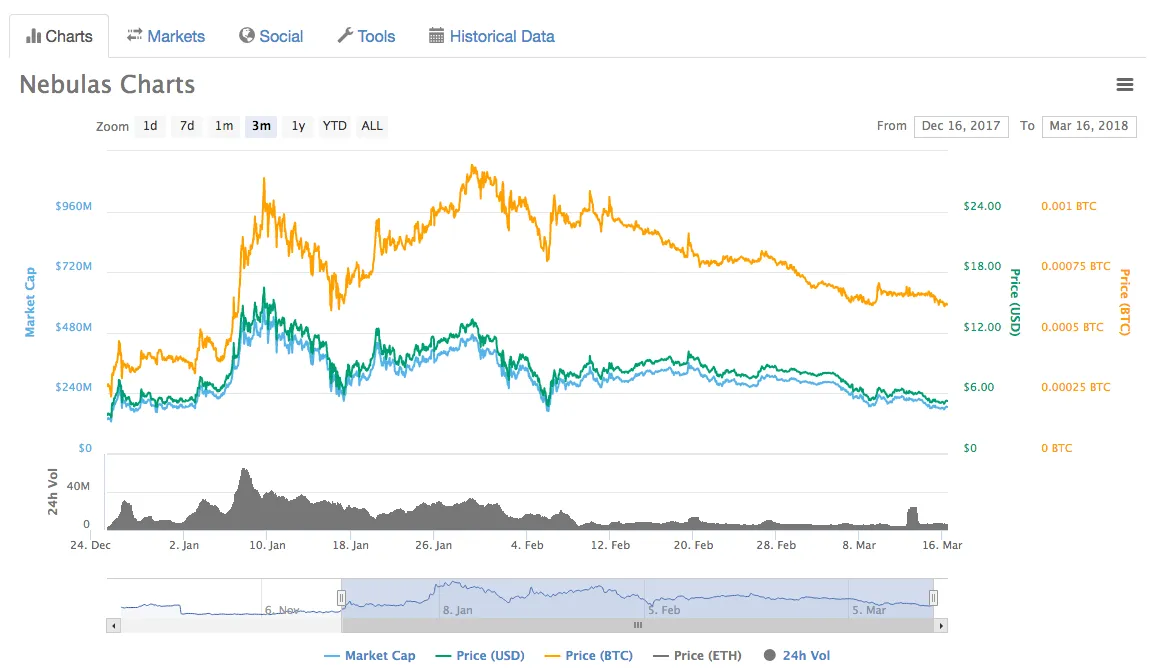Intro
On June 30, 2017 I wrote an article titled “Antshares (ANS) – The Ethereum of China?. At the time, I didn’t know much about the project other than they had a few promising partnerships, and they were about to rebrand to NEO. It turns out that oddly-named project became a big project – growing by nearly 1000% in Market Cap over the past 9 months.
I discovered Antshares much like I discovered Nebulas, randomly while browsing through event calendars and various news articles. As a catalyst-driven investor, I look for events that are going to create a lot of interest from the community. These events are typically Mainnet launches, air drops, etc. In this case, Nebulas is launching their Mainnet. Before we jump into the project I want to underscore a few members of the team because they are stellar. And after all, if your team isn’t up to the challenge, what’s the point in trying?
Team
Remember how I mentioned Antshares (rebranded to NEO) in the opening paragraph?
Well, it’s a small world after all – the founder of NEO is also the founder of Nebulas. Among the other co-founders and team members are co-founders of NEO, as well as many former Google employees. If anyone knows about what it takes to build a search engine product for the blockchain, it would be this team.
What is Nebulas?
The canned response from their website is “a decentralized platform which provides a search framework for all blockchains. It is an open source public chain”. So, what does that actually mean?
Nebulas is an incentive-based, self-evolving blockchain system with a decentralized platform which provides a search framework for all blockchains. Nebulas focuses on searches among decentralized applications (DApps), smart contracts, and user’s blockchain assets. This highly technical project has three core features:
Nebulas Rank (NR): Open source, core ranking algorithm based on “liquidity, propagation of users’ assets, and the interactivity between users.” NR will help rank various entities (e.g. smart contracts, addresses, DApps.)
Nebulas Force (NF): “Nebulas Force (NF) provides the Nebulas blockchain & its distributed applications built on top, the capability to self-evolve” With NF, developers can update the protocol, preventing divides in the community from hard forks.
Developer Incentive Protocol (DIP): Positive feedback loop in place to motivate DApp creation.
I guess what we’re talking about here is buying the…DIP? Sorry, I had to say it.
Now, back to the Mainnet release. According to their roadmap on their website, the launch will be sometime in Q1 2018 which is by the end of March 2018. Hodlers of NAS will have to exchange their ERC-20 tokens for the native NAS token once Mainnet goes live and the Nebulas team has assured everyone that there will be plenty of documentation on that process.
Investment
Ok, the project sounds ambitious, the team is off the charts and we have a catalyst coming up. Let’s look at the 3 month chart from coinmarketcap.com:

Compared to a lot of other tokens out there, NAS has remained relatively stable from it’s ATH back in late January. Many tokens have lost over 75% of their value from ATH, but NAS is right around a 50% loss. Currently it’s hodling support around the 0.00061880 BTC level. The ATH is around 0.00116994 BTC, which is almost a 100% move from where we are today. Given the fact that the price has remained stable in the past few months, and the Mainnet launch is rapidly approaching, I would feel very comfortable buying in right now.
Summary
When I look at a new project to invest in, I always look at the same handful of items: what are they building, who’s building it, is there a strong community, and what does the chart look like? In this case, Nebulas has checked every box. If you’re looking to get in on the ground floor of what is shaping up to be a big player in the blockchain space, this is probably a good time to do so.
As always, I’m not a financial advisor and you should do your own due diligence!